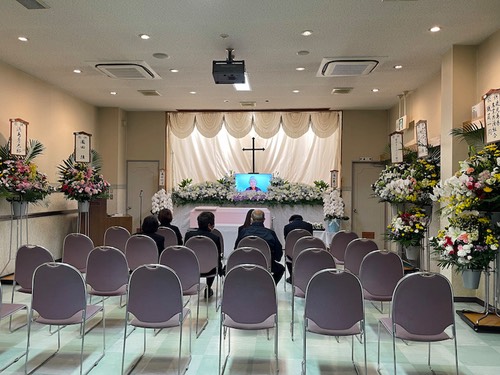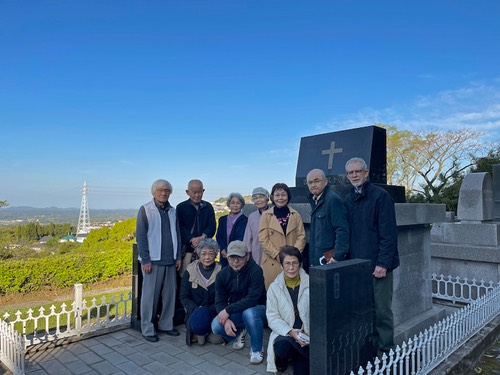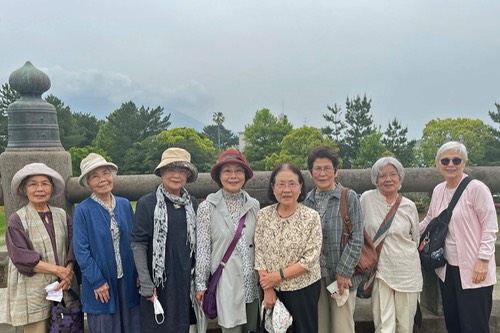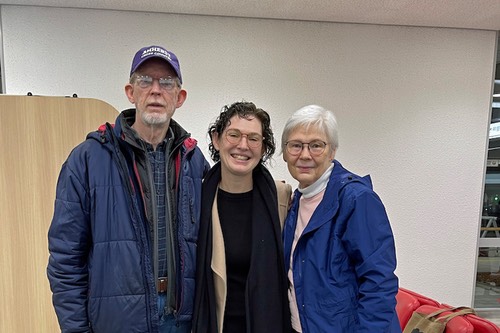Vol 54_1, Spring 2023
Dear Friends,
Recently I have experienced firsthand that Japan is an aging country and that funerals in Japan are changing—both of which have a direct impact on our ministry here. The last of March and in mid-April, I conducted the funerals for two elderly church members who were in their late eighties.
Japan has the highest senior population ratio of any country in the world (29.1% are over 65), which is a result of a very low birth rate and high life expectancy. A large percentage of Japanese are dying considerably later in life—over 50% of men and over 70% of women who die are over 80.
Along with the aging of Japan, the traditional funeral has changed over the past 20 years; that is, they have become smaller and simpler. The major trend is away from a large inclusive funeral to a smaller one limited to the family and very close friends, which is called a Kazoku Sou (family funeral). There are two basic reasons for this trend: one is that, as more people die at an older age, there are fewer of their peers alive to attend the funeral, and a second major reason is to reduce the cost of the funeral. The average cost of a traditional funeral is over $20,000, whereas a family funeral would cost about half of that. Both of the funerals I conducted recently were family funerals.
A typical Japanese funeral would involve (over a two-day period) a wake on the first evening, and a formal funeral service and cremation on the second day. After the cremation, family members would use special long chopsticks to place pieces of the bones into an urn. This urn would then be interred in the family grave or a mausoleum at a later date. Ninety-nine percent of burials in Japan involve cremation.
Ninety percent of funerals in Japan are Buddhist. Usually a family would ask their parish temple priest to come and chant prayers and conduct rites for the departed. One of the major costs of a Buddhist funeral is the honorarium for the priest, which is, on average, $2000. This would be in addition to what is paid to the funeral home.
In order to avoid paying these high costs for a traditional Buddhist funeral, many Japanese are choosing not to have a formal funeral service of any kind. Instead, they gather only for the cremation. This non-funeral is called a Choku Sou or Zero Sou (a "direct funeral" or "a zero funeral"). In Tokyo, the capital, more than one in four funerals are Choku Sou.
March 30th, I conducted a family funeral for Brother Koichi Hidaka (89). Bro. Hidaka, who was baptized as a high school student, was a career police officer and also served as a deacon at the Yoshino church. He was probably one of the very few Christian police officers in Japan. Because his wife passed away last year, the only Christian family members to attend the funeral were his daughter and son-in-law. My message for the small group in attendance was of the hope we can have in the face of death through Jesus’ death and resurrection. Death is not the end. Most Japanese understand death to mean eternal sleep (eimin).

Mrs. Hide Sonoda’s Funeral
April 15th, I conducted a family funeral for Mrs. Hide Sonoda (88), a long-time member of the Tarumizu Church of Christ. Since Mrs. Sonoda had been battling cancer for the past few years, she had been unable to attend Sunday services regularly, so we would stop by her house to visit and take her communion when we were in Tarumizu for Sunday services. No one in her family was a Christian, but her son, a veterinarian, had great respect for his mother's faith and how it was expressed in her kindness and concern for others. Even though his father had been a Buddhist, he wanted to acknowledge his mother's Christian faith by giving her a Christian funeral.
Sadly, this does not happen very often in Japan. In most cases, if there are no other Christian family members, the wishes of the deceased Christian family member are disregarded and they are given a Buddhist funeral. I have seen this happen firsthand, so I was very relieved when Mrs. Sonoda's son contacted me the day she passed away and asked that I conduct a Christian funeral for her. A Christian funeral in Japan is an important opportunity for a Christian to witness to family and friends left behind about their faith and hope in Jesus Christ, and Mrs. Sonoda's funeral was no exception.
Another way a Christian can witness to family and friends left behind is to have their ashes interred in a Christian mausoleum. Twenty-eight years ago, the Yoshino church built a a mausoleum for this purpose in a cemetery on a hill overlooking Yoshino. This mausoleum is big enough to hold 120 urns of ashes and has the words of Jesus from John 11:25 engraved on it: "I am the resurrection and the life. Whoever believes in me, though he die, yet shall he live.” The names of those interred here and dates of their lives are engraved in a very visible place.
This mausoleum is a witness to family and friends who come to pay their respects of the Christian faith of the one interred there. It is also a witness to the local community that there is a body of Christians who treat the departed with dignity and respect, and who believe that Jesus Christ is the resurrection and the life.
April 9th, Easter Sunday, we gathered (as we do every Easter) at our mausoleum for our sunrise Easter memorial service—to remember and give thanks for the lives and witness of our brothers and sisters who have gone to be with the Lord and to reconfirm the hope we have in the face of death through the resurrection of Jesus Christ.

Easter Service at Yoshino Church Mausoleum
April 19th, the Yoshino church ladies’ group met for their monthly meeting and then drove to one of the parks in Kagoshima for an enjoyable walk before having lunch together at a nearby restaurant. Strict Covid restrictions have been lifted, so after being careful to abide by those for so long, they enjoyed getting out in the beautiful spring weather and having this fellowship together.

Yoshino Church Ladies on their Outing
Before we close, we want to share some happy family news. Our daughter, Shelley, was finally able to come home for a two-week visit in mid-January. It had been eleven years since she had been home. Of course, Covid-19 had also put things on hold (or made travel quite difficult) for a few years. We had a very special time together, and she enjoyed seeing friends and church members she hadn’t seen during those long years.

Visit with daughter Shelley in January
We want to thank you for your prayers and support for our ministry here.
In Him,
Walter & Mary